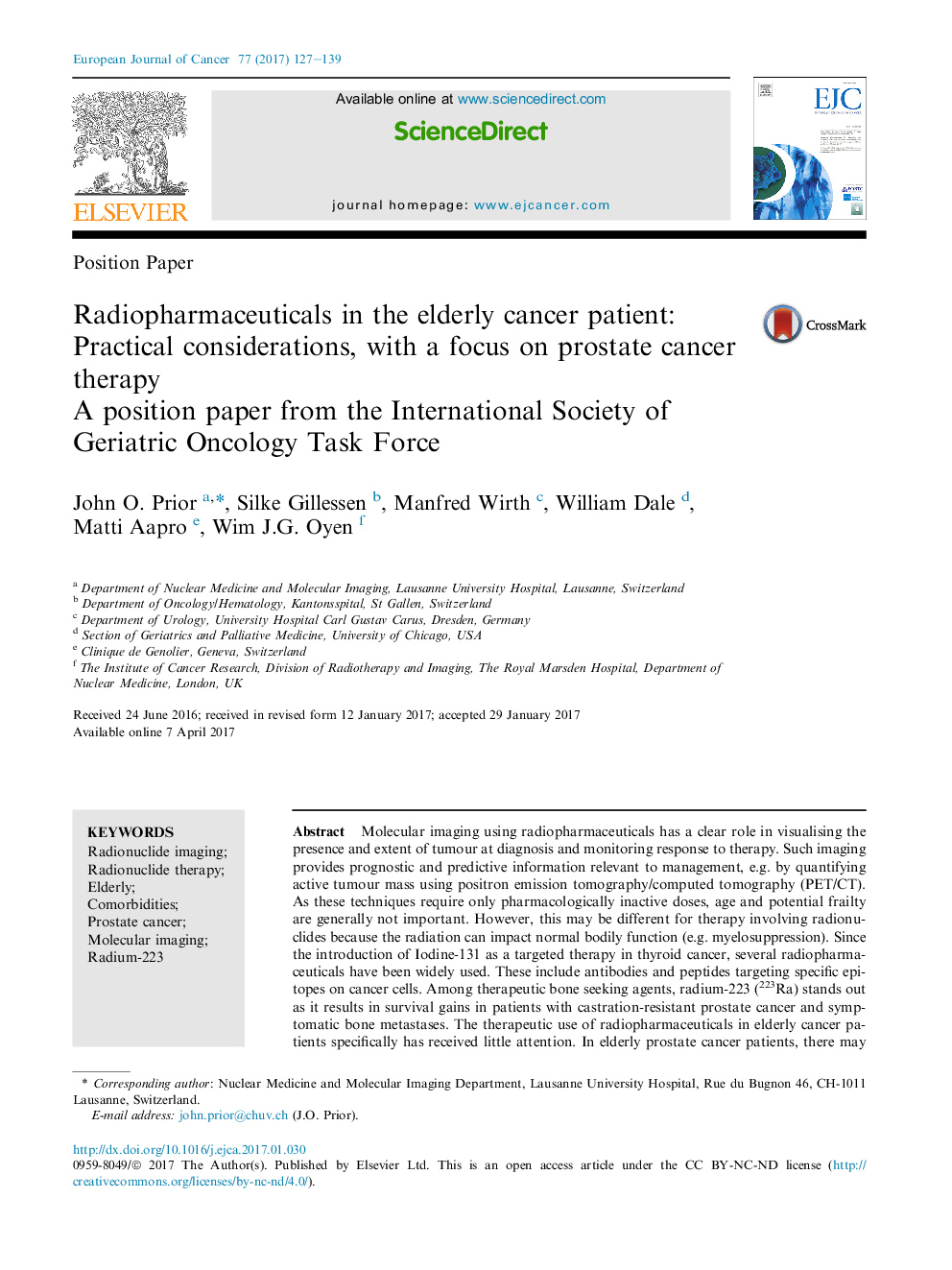| Article ID | Journal | Published Year | Pages | File Type |
|---|---|---|---|---|
| 5526618 | European Journal of Cancer | 2017 | 13 Pages |
â¢Include more elderly patients in pivotal trials.â¢Diagnostic radiopharmaceuticals are not a concern in elderly patients, even in the presence of vulnerability.â¢Therapeutic radiopharmaceuticals in hormone-resistant prostate cancer are safe; but assess risk of short-term toxicities.
Molecular imaging using radiopharmaceuticals has a clear role in visualising the presence and extent of tumour at diagnosis and monitoring response to therapy. Such imaging provides prognostic and predictive information relevant to management, e.g. by quantifying active tumour mass using positron emission tomography/computed tomography (PET/CT). As these techniques require only pharmacologically inactive doses, age and potential frailty are generally not important. However, this may be different for therapy involving radionuclides because the radiation can impact normal bodily function (e.g. myelosuppression). Since the introduction of Iodine-131 as a targeted therapy in thyroid cancer, several radiopharmaceuticals have been widely used. These include antibodies and peptides targeting specific epitopes on cancer cells. Among therapeutic bone seeking agents, radium-223 (223Ra) stands out as it results in survival gains in patients with castration-resistant prostate cancer and symptomatic bone metastases. The therapeutic use of radiopharmaceuticals in elderly cancer patients specifically has received little attention. In elderly prostate cancer patients, there may be advantages in radionuclides' ease of use and relative lack of toxicity compared with cytotoxic and cytostatic drugs. When using radionuclide therapies, close coordination between oncology and nuclear medicine is needed to ensure safe and effective use. Bone marrow reserve has to be considered. As most radiopharmaceuticals are cleared renally, dose adjustment may be required in the elderly. However, compared with younger patients there is less, if any, concern about adverse long-term radiation effects such as radiation-induced second cancers. Issues regarding the safety of medical staff, care givers and the wider environment can be managed by current precautions.
